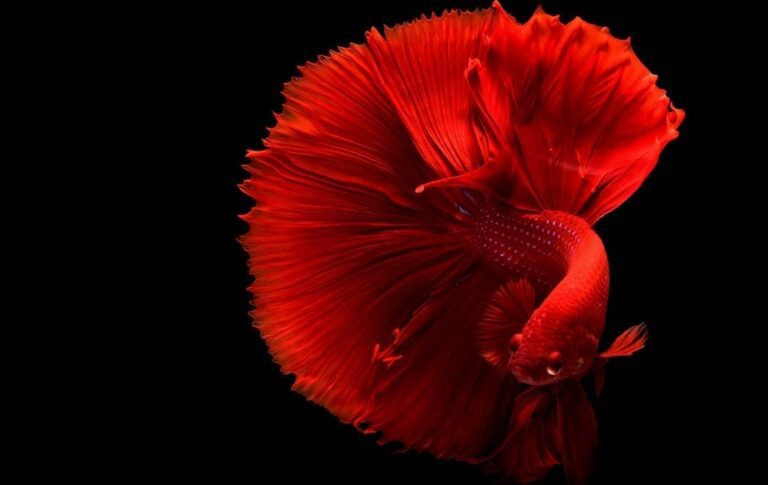Waterfalls are a beautiful addition to any garden pond. They add movement and sound to the pond, creating a soothing and peaceful environment. They also act as a focal point for the garden pond. They help aerate the pond, improving the health of the aquatic plants and fish.
To create a waterfall in your garden pond, choose a suitable location. Aside from the pond pump, you will need to install a waterfall pump to circulate the water and create a channel or cascade for the water to flow down. With some basic tools and materials, you can easily design and build a beautiful waterfall in your garden pond.
How to Design and Build Waterfalls for Garden Ponds

Below are the key steps for designing and building a waterfall for garden ponds.
Determine the Location to Install the Garden Pond
Consider the size of your outdoor space, the location of the pond in relation to your home and other structures, and the desired height and width of the waterfall. You should also consider the proximity of underground utilities, as you may need to dig at the bottom of the pond to install a waterfall.
Determine the Type of Waterfall to Install
There are different types of waterfalls for garden ponds to choose from. The best one for your pond will depend on its size, shape, location, and personal preferences. Some design ideas to consider include the following:
- Cascade Waterfalls: These waterfalls are created by using rocks or other materials to create a series of steps or tiers for the water to flow down, creating a series of smaller pools or reservoirs along the way.
- Sheet Waterfalls: These are built using a flat, horizontal surface, such as a piece of glass or a sheet of plastic, to create a thin, flat curtain of water.
- Stream Waterfalls: These waterfalls are created by building a channel or stream bed for the water to flow through. It flows through a channel or stream bed, with rocks or other materials used to create a natural-looking watercourse.
- Waterfall Spillway: The waterfalls are created using a spillway, a channel that allows the water to flow over the edge and into the pond, creating a dramatic and visually appealing effect.
- Cascading Stream Waterfalls: They combine the features of both a stream and a cascade waterfall, with the water flowing through a channel or stream bed before cascading down a series of steps or tiers.
- Combination Waterfalls. They combine elements of different waterfalls, such as a cascading stream or a sheet waterfall with a small cascade.
The type of waterfall you choose will depend on the size and layout of your water garden and your personal preferences. No matter what design you choose, be sure to plan the flow and direction of the water carefully to create a visually appealing and natural-looking waterfall.
Design the Layout and Features of Your Pond and Waterfall
Consider the shape and size of the pond, the location of the pond waterfall, and the materials and plants you want to incorporate. Think about their placement and whether they require specific maintenance. You should also plan for adequate filtration, circulation, and additional features, such as lighting or a pump.
Gather the Necessary Materials and Tools
To build a garden pond waterfall, you will need the following materials and tools:
- A pond liner
- Rocks or other materials for the waterfall
- A pump to circulate the water
- Water filter
- Hoses or pipes to connect the pump to the waterfall
- A shovel and other tools for digging
When gathering the tools, determine and acquire the type of waterfall you will install. There are several options to choose from, including pre-formed waterfall kits, liner-based waterfalls, and custom-built waterfalls.
Pre-formed waterfall kits are the easiest and quickest option, but they may not be as aesthetically pleasing as a custom-built waterfall.
Liner-based waterfalls offer more flexibility in design, but they can be more labor-intensive to install. Custom-built waterfalls offer the most flexibility in design, but they require more planning and expertise to build.
Install the Waterfall in the Garden Pond
Start by draining the water garden. If it has pond fish, put them in a suitable container with water from the pond. Then proceed to install the pump and plumbing for the waterfall.
Place the pump in the pond and connect the plumbing to the pump using a hose. Use the plumbing to route the water to the top of the waterfall, leaving enough excess hose to allow the water to flow down the sides of the waterfall.
Arrange the rocks or other materials to create the desired shape and flow for the waterfall. You can also add plants and other decorative elements to boost visual interest in the waterfall.
Fill the Pond and Waterfall With Water and Test the Pump
Once the pond waterfall is complete, fill it with water and test the pump to ensure it is flowing properly. Then add fish to the pond, and enjoy your new waterfall.

Tips for Designing Waterfalls for Garden Ponds
When designing a waterfall for a garden pond, there are a few key things to consider to ensure that it looks and functions well. Some tips for designing waterfalls for garden ponds include:
- Choose a location for the waterfall that is easily accessible for maintenance and will not obstruct views or paths in the garden.
- Consider the size and shape of the water garden and the surrounding area when choosing the size and shape of the waterfall.
- Use large rocks, smaller rocks, and other materials appropriate for the waterfall’s size and scale and will complement the surrounding landscape.
- Plan the flow and direction of the water carefully to create a visually appealing and natural-looking waterfall.
- Consider adding plants and other decorative elements, such as lighting, to enhance the overall look and feel of the waterfall and backyard pond.
- Make sure to install a pump with sufficient power to provide the desired flow rate for the waterfall.
9 Design Ideas for Waterfalls for Garden Ponds
- Naturalistic Waterfall: This type of waterfall is designed to look as if it is a natural feature in your garden. It can be created using rocks, boulders, and plants to create a natural-looking setting.
- Formal Waterfall: A formal waterfall is more structured and may feature straight lines, geometric shapes, and man-made materials such as concrete or stone. It can be a good choice for a formal garden setting.
- Water Wall: A water wall is a vertical sheet of water that falls from a height, creating a mesmerizing visual effect. It can be created using a specially designed water feature or by building a wall with a built-in spillway.
- Solar-Powered Waterfall: If you want to create a waterfall but don’t want to deal with the hassle of wiring electricity to the pond, you might consider a solar-powered waterfall. These are powered by the sun and can be a great eco-friendly option.
- Miniature Waterfall: If you have a small pond or limited space, you can still incorporate a waterfall by going miniature. A small, tabletop waterfall can be a great addition to a patio or balcony garden.
- Pondless Waterfall: If you don’t want a full pond in your garden, you can create a pondless waterfall instead. This type of waterfall is built with a hidden reservoir that stores the water and recirculates it back to the top of the waterfall. It can be achieved using rocks, plants, and other natural materials to camouflage the reservoir and make it blend in with the surroundings.
- Waterfall With a Fire Feature: If you want to add drama and ambiance to your garden pond, consider incorporating a fire feature into your waterfall design. This can be achieved using a special fire bowl or building a fire pit next to the waterfall.
- Waterfall With a Fountain: A fountain is a type of water feature that sprays or jets water into the air. You can incorporate a fountain into your waterfall design to add movement, sound, and visual interest to your garden pond.
- Waterfall With a Stream: A stream leading to a waterfall can create a more immersive and natural-looking water feature in your garden. You can use rocks, plants, and other natural materials to create a streambed and create a sense of movement and flow.
Conclusion
A pond waterfall feature can add visual interest and create a relaxing atmosphere in any outdoor space. Designing and building a waterfall for a garden pond can be a rewarding and enjoyable project that adds beauty, movement, and sound to your outdoor space.
When designing your waterfall, consider the size and layout of your garden, your personal style, pond design, and the maintenance requirements of your chosen design. Make sure to properly plan and design the waterfall to ensure that it functions well and is safe for use.
It may also be helpful to consult with a professional or refer to online resources and guides to ensure that you have the necessary tools and materials and follow proper construction and installation techniques. With some planning and creativity, you can create a stunning waterfall that enhances the look and feel of your garden pond.






